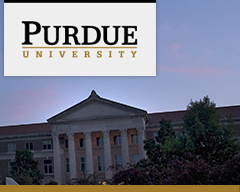Description
An open question in the behavior of metals subjected to shock is the nature of the deformation that couples to the phase transformation process. Experiments to date cannot discriminate between the role of known deformation processes, such as twinning or dislocations accompanying a phase change, and modes that can become active only in extreme environments. We show that a deformation mode not present in static conditions plays a dominant role in mediating plastic behavior in HCP metals and determines the course of the transformation. We conduct molecular dynamics simulations for Ti to demonstrate that the transformation is preceded by a 90˚ lattice reorientation of the parent and the growth of the reoriented domains is accompanied by the collective action of dislocations and deformation twins. We suggest how diffraction experiments may validate our findings. COLLABORATORS H. Zong, X. Ding, J. Li, J. Sun, E. K. Cerreta, A. P. Escobedo, F. L. Addessio, C. A. Bronkhorst.
Recommended Citation
Lookman, T. (2014). Collective nature of plasticity in mediating phase transformation under shock compression. In A. Bajaj, P. Zavattieri, M. Koslowski, & T. Siegmund (Eds.). Proceedings of the Society of Engineering Science 51st Annual Technical Meeting, October 1-3, 2014 , West Lafayette: Purdue University Libraries Scholarly Publishing Services, 2014. https://docs.lib.purdue.edu/ses2014/mss/cppt/16
Collective nature of plasticity in mediating phase transformation under shock compression
An open question in the behavior of metals subjected to shock is the nature of the deformation that couples to the phase transformation process. Experiments to date cannot discriminate between the role of known deformation processes, such as twinning or dislocations accompanying a phase change, and modes that can become active only in extreme environments. We show that a deformation mode not present in static conditions plays a dominant role in mediating plastic behavior in HCP metals and determines the course of the transformation. We conduct molecular dynamics simulations for Ti to demonstrate that the transformation is preceded by a 90˚ lattice reorientation of the parent and the growth of the reoriented domains is accompanied by the collective action of dislocations and deformation twins. We suggest how diffraction experiments may validate our findings. COLLABORATORS H. Zong, X. Ding, J. Li, J. Sun, E. K. Cerreta, A. P. Escobedo, F. L. Addessio, C. A. Bronkhorst.
